For a less traditional savory breakfast, I enjoy the polenta-like, 100%-cornmeal, ‘Johnnycakes’ style of pancake with greens and eggs.
But for eating with maple syrup or a special occasion, I like a fluffy cornmeal-and-wheat-flour mix:
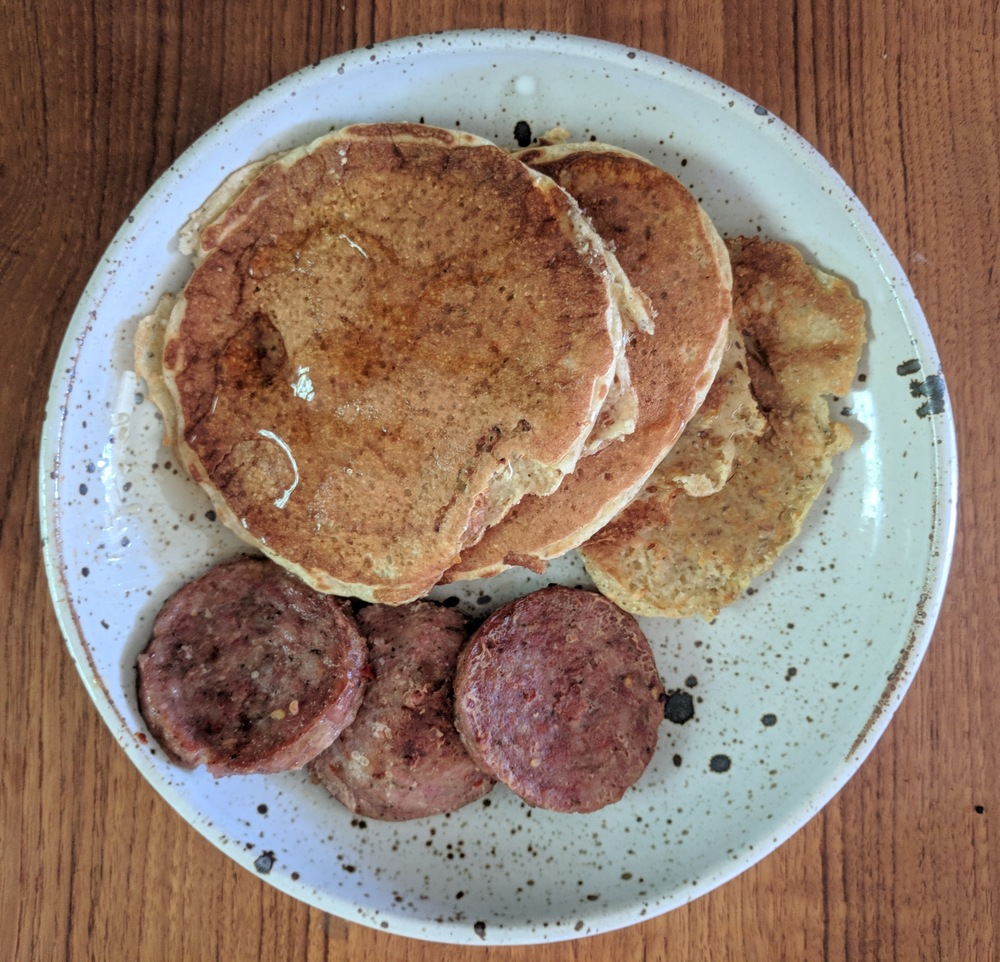
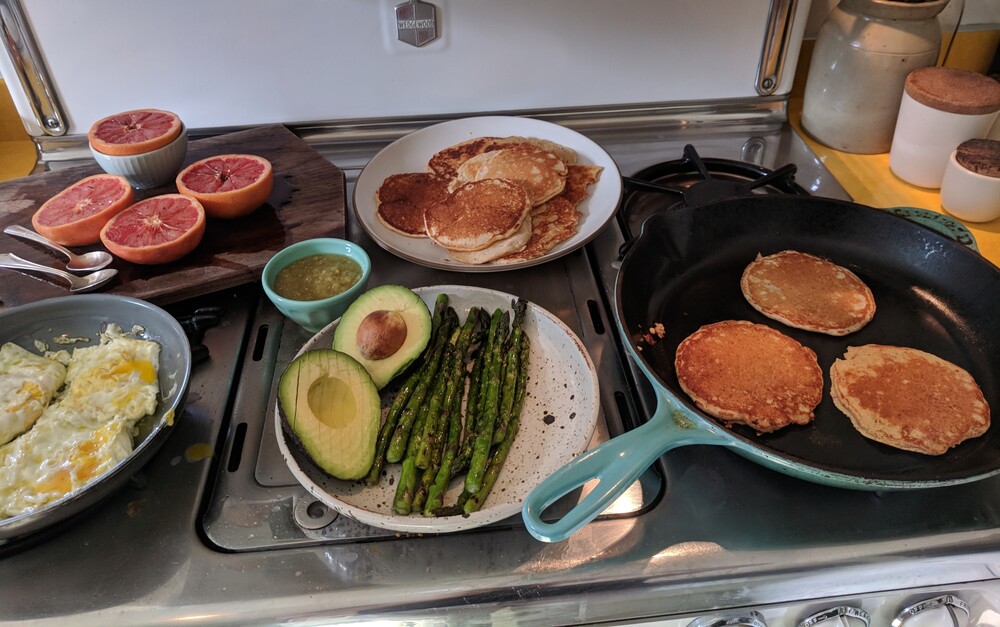
From a little bit of experimentation, my current favorite recipe goes heavier on the cornmeal (50/50 mix with flour) for flavor and texture, and includes either buttermilk or some yogurt. For a small batch of 8 pancakes (2 people):
Mix together dry:
- 1/2 cup cornmeal
- 1/2 cup white flour (or 1/4 cup whole wheat + 1/4 cup white: heartier but less fluffy)
- 1 T sugar
- 1 tsp baking powder
- 1 tsp baking soda (can also use baking powder if needed**)
- 1/2 tsp salt
Then add and lightly whisk in:
- 1 egg
- 1.5 T melted butter
- 2/3 to 1 cup buttermilk depending on the desired texture*
- I’ve also had success substituting a 50/50 mix of milk and greek yogurt (note: just regular milk won’t work unless you shift to using only baking powder– without buttermilk, you need something acidic to activate baking soda!)
Pre-heat a skillet on medium-low (especially if it’s large compared to the burner, to ensure more uniform edge-to-center heat), cook batter until bubbles start to pop through on the top and the bottom’s browned, flip, cook a few more minutes.
For extra credit and a really fresh corn taste, use fresh-ground dried flour corn you grew in your garden:
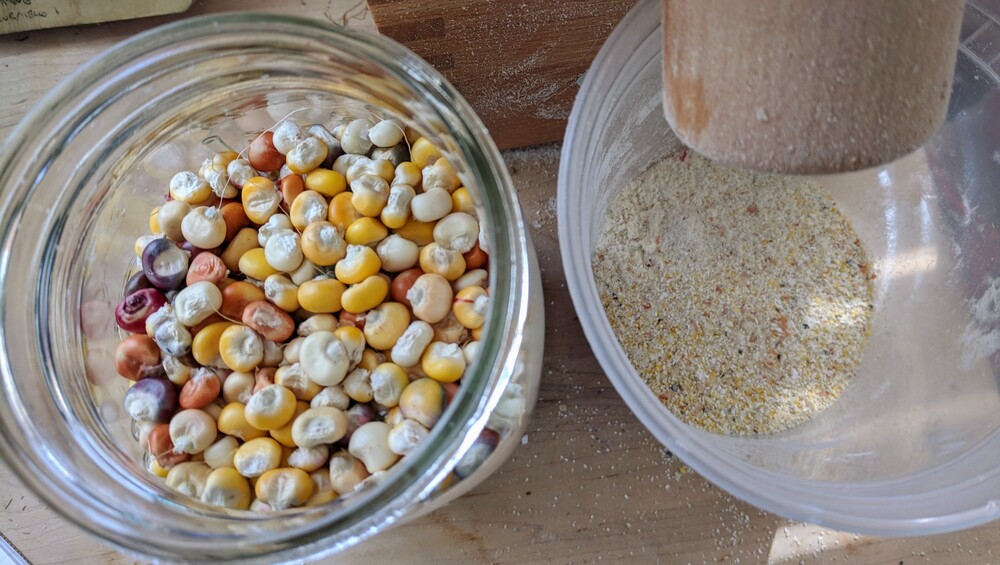
And then cook over a wood stove in an off-the-grid cabin:
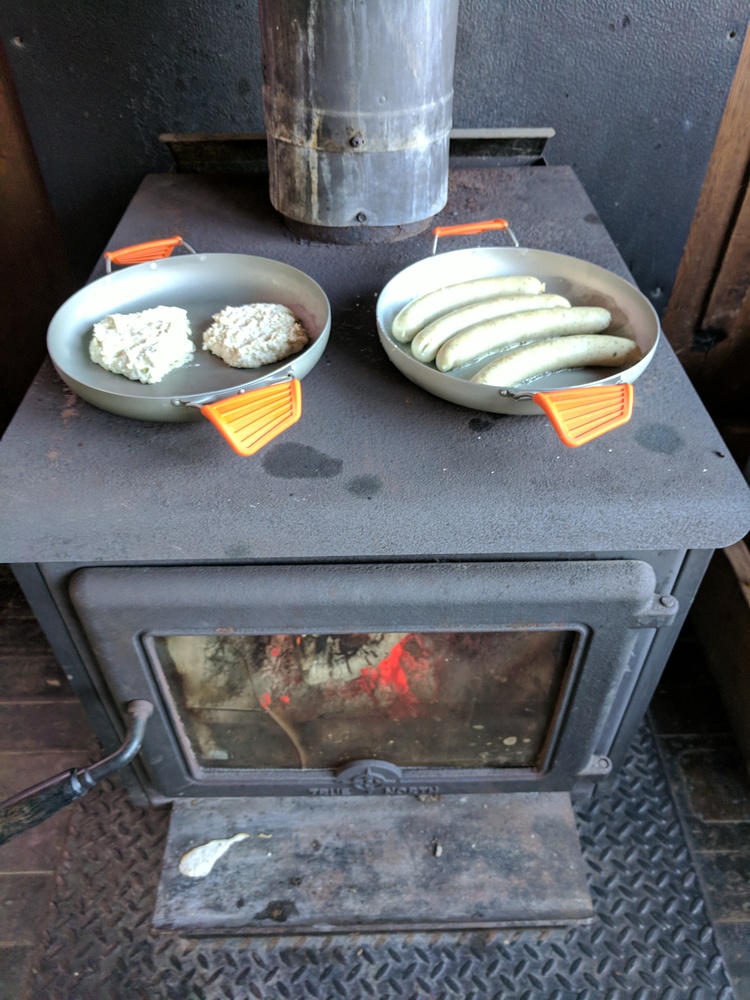
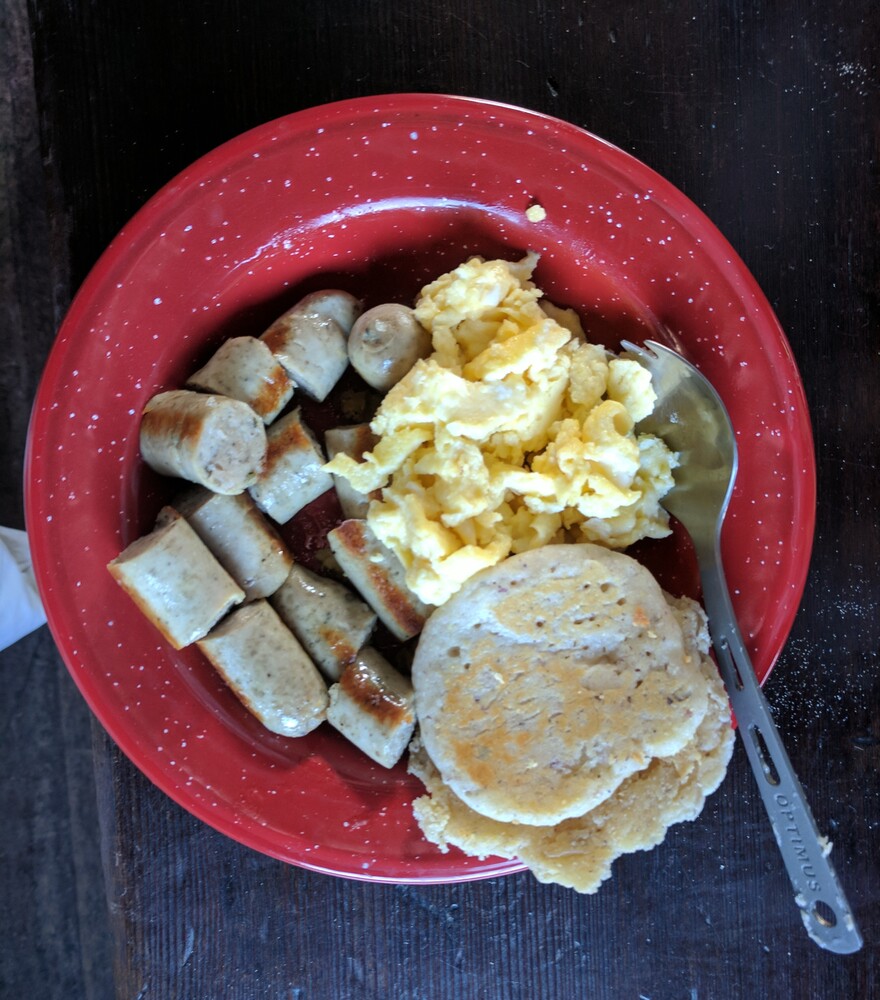
* Side note: Varying the amount of liquid really changed the pancakes. 2/3 cup buttermilk made a thick, almost cornbread-like batter (shown on the wood stove above), which resulted in a delicious, thicker, slower-cooking pancake. We actually preferred the texture of this one that’s a step toward cornbread. On the other hand, 1/2 cup yogurt + a bit over 1/2 cup milk led to the pancakes at the top of this post– light, spongey, and fluffy (and faster-cooking).
** Side note: For more reading on the baking powder vs. baking soda question… double-acting baking powder is easier to use and doesn’t depend on an acidic component to activate the soda… but baking soda has some benefits…